| Position | Person |
|---|---|
| Publisher | Louis Sowa |
| Database | Pete Nelson |
| Writer | John Addis |
| Writer | Bob Beville |
| Writer | John Stoops |
| Webmaster | Byron Lunz |
TRVP Staff Bios
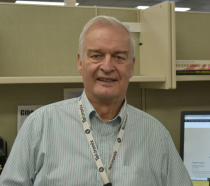
Louis Sowa, Publisher
Louis grew up on a farm in the Willamette Valley. In 1966 he started at IBM in San Jose CA as a Systems Tech on the 360/20 Mainframe. In 1967 he was one of the first to transfer to the new IBM facility in Boca Raton FL, where he became a Manager of Systems Techs. He wanted to stay in a technical position and became a Test Engineer.
He then joined the Custom Process Control System Design team. In 1973 Louis moved Back to Oregon to care for his father and continue as a single parent to daughters after accepting a job at Tektronix as 3260 System Tech. Louis was on the Muppets development Team, Cats System Software Design, a team in LID and finally was a Custom Test System Design Engineer. After Tek Louis worked at Hewlett Packard in Automated Manufacturing design and support. Louis has volunteered with TRVP since 1997, and volunteers at Antique Powerland in Brooks, Oregon, FM Radio Station Engineering, and a Food Pantry.
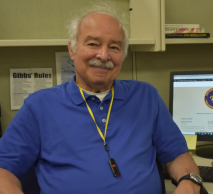
Peter is a native Oregonian born at Emanuel hospital in Portland. He graduated from Beaverton High School and then Portland State College (now a University). He majored in mathematics with minors in Applied Science and Electrical Engineering. After college, when the draft board sent a letter, he choose to join the Air Force after a recruiter promised a job and location choice. Pete was naive.
His first job was SAGE weapons controller defending the nation’s capital from Fort Lee Virginia. His second job was at Melville AFS in Labrador (near Goose Bay). The task was to intercept enemy bombers as they attacked North America. With the postponement of World War III, he busied his time rescuing wayward aircraft before they crashed.
His third assignment was the Space Defense Center, Cheyenne Mountain outside Colorado Springs, Colorado as an Orbital Analyst. He found, tracked and predicted the path of orbital satellites. It was a chance to use his training at last.
Assignment four was Woomera, South Australia, Australia in the middle of the Gibber desert for two years. He was one of 36 members of an Activation Test Force responsible for bringing the Defense Support Program ground station to life in less than 730 days! The ground station was activated on time, within budget, and met all operational requirements. As of November 2010, the 40th anniversary of the first satellite launch, the program had successfully launched 23 satellites into synchronous orbit.
From the heat of the desert, the Air Force next sent Peter to chilly Great Falls, Montana in the dead of winter (40 below). As a Missile Combat Crew Commander responsible for ‘babysitting’ 50 nuclear missiles, the assignment was stressful but quiet except for the night when Nixon resigned. To keep busy, he enrolled in graduate school.
The Air Force decided they had too many officers so they implemented RIF (Reduction in Force) program. He continued his education at University of Montana. Coming back to Oregon, he worked as an Industrial Engineer setting time standards for Freightliner until an opportunity to work at Tektronix arose. While at Tektronix he created the first facilities space plan, wrote the first budgeting software on a desk top PC (Tek 4051), and a program for marketing to forecast anticipated demand for lab instruments to coordinate with manufacturing and finance. Then he retrained as a UNIX system administer to support mechanical engineers CAD/CAM in Accessories Division. Tektronix continued to downsize, and he left in 1994.
While at Tek, he worked with Washington County sheriff’s department in the Disaster Management section where he created, and executed a three county disaster drill on Tek property. He is a founding member of a church in Orenco and managed their finances for two years. That led to a consulting job at St. Vincent hospital with CMSI installing UNIX systems and retiring their IBM mainframe.3 A recruiter offered him a consulting job at Freightliner to write a program. His second tenure at Freightliner was for 3 years after which he retired. Peter has four children and five grandchildren. Interests: Computer, travel, sailing in the San Juan Islands, exploring the world, investing, walking, and maintaining relations with family and friends. Organizations: Beaverton HS Golden Grads, Cascade Prime Timers, Trails Club of Oregon, Evergreen Investment Club (NAIC), and United Nations Association.
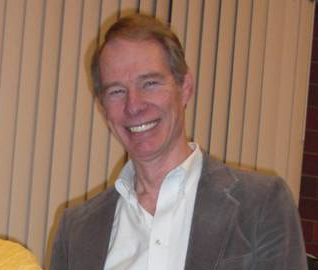
John Addis was born in Plainfield, NJ, and grew up in Monmouth County, NJ. One of his neighbors was three years older and interested in electronics. It was there that he became interested in, then designed, built, and tested tape recorder and audio amplifier circuits. The family moved to Daytona Beach, FL, when John was barely in the 9th grade.
He was admitted to the Massachusetts Institute of Technology where he received his bachelor’s degree in electrical engineering. He applied for work at Hewlett Packard in Loveland, CO, at Tektronix, at Hewlett Packard in Palo Alto, CA, and received employment offers from all three. At Tektronix, he designed several products, including the 1A7, 10A2A, 7A11, 485 vertical preamplifier, the 7A29, and the ground-breaking integrated circuit at the core of all five original 11K series plugins, the M377. Along the way he published three articles in industry magazines, a chapter in Analog Circuit Design, Art, Science and Personalities, and gathered 15 patents, a few of them actually good. A career spanned designs using vacuum tubes, transistors, hybrids, and ultimately integrated circuits.
John probably gained broader fame among most Tektronix employees for his address at the Tektronix Shareholders meeting in 1988 than for his circuit designs. Basically, he told the shareholders and the Board of Directors, that management, after granting Golden Parachutes and lucrative bonuses to executives, had lost half a billion dollars and split the once iconic, egalitarian, profit-sharing company into “them” and “us”. He was actually applauded at the meeting. The next shareholder meeting was held in New York City. John retired from Tektronix in 1991.
Because his writing was well known, he was able to consult in Japan as well as the US. He was asked to be a founding partner in a local electronics company named Preamble Instruments where he was Chief Engineer. The first product he designed there, a 100MHz differential amplifier, the 1855, was a big success and was largely responsible for Preamble’s acquisition by Tektronix competitor, LeCroy Corporation of NY. LeCroy still had the 1855 in its catalog 25 years later, an eternity in the electronics world! Preamble also did OEM for HP, so at one point, John became probably the only person ever to have products of his design in HP, Tektronix, and LeCroy catalogs simultaneously. During his career John had the opportunity to travel widely, including to the Soviet Union four times, Greece four times, Japan three times, most of the countries in Europe, Rio de Janeiro twice (once during Carnival), Egypt (twice, climbing to the top of two Giza pyramids, which is more enjoyable than legal), China, the Society Islands, and Indonesia. His first trip to Egypt resulted in an interest in the ancient history of the Middle East. He published a technical article Mathematics in Ancient Egypt, in a local journal. He has also visited Israel twice and Jordan twice, all together visiting 50 different countries.
One of his current avocations is exposing Christian Apologetics as a fraud.
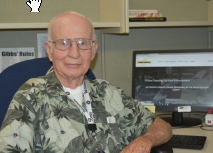
Bob graduated from the University of Florida with a BSEE degree in 1961, MSE in 1963. At Patrick Air Force Base, he was director of 55 research missions recording refractometer measurements in the missile launch corridor of the Atlantic Missile Range, Cape Canaveral, Florida. He joined Tektronix in 1963 to be a Field Engineer, then a product evaluator, design engineer, and a supplier quality engineer. He was on the design teams of the 821 Trigger Recognizer, 850 Counter/Timer, 465 Mod 719A Transition Counter, FG5010 Function Generator, 7D11 Digital Delay Plugin, and MPTS Multi-Purpose Test Stations.
In Beaverton, he began part time teaching a class in Boolean Algebra and Logic Design in the TEP Tek Education Program. Later, classes in understanding the GPIB General Purpose Interface Bus. At a satellite campus of Oregon Institute of Technology, Bob taught Boolean Algebra and Sequential State Machine Design as an adjunct instructor, part time, for 11 years. A MBA in 1983, UofP. With each Tektronix Annual Report, he formulated and posted Tek’s Z-Score, the metric derived by Dr. Altman of a company’s propensity to go bankrupt.
The “GLOWWORM BULLETINS”, posted on tek.rumor, were his intelligence-style analyses of operatives’ sightings and activities of Tek executives and Board Members. Bob’s book collection is non-fiction accounts of intelligence, counter intelligence, espionage, sabotage, cryptography, code breaking and submarine war patrols. During the Cold War, Bob feared an EMP explosion would ruin all the semiconductor junctions, so he collected hundreds of slide rules for recovery.
Retirement was in 1999. 35 years, Bulova watch; treated to a retirement lunch at the Helvetia Tavern. He began volunteering on the staff of the Tek Retiree News in August 2017 and wrote his career memoirs. He spends leisure time volunteering on Oregon Archaeology Society archaeology excavations, volunteering at the Fort Vancouver Archaeology Lab, studying wilderness survival and bushcraft techniques, taking PCC Criminal Justice courses and metal detecting. He reads Patricia Cornwell, Kathy Reichs and the Jon Jefferson/Dr. Bill Bass Body Farm novels. He has planned to donate his body to the Body Farm for Forensic Science. Mortui Prosumus Vitae.
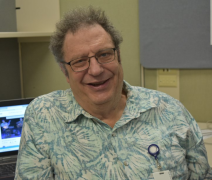
John was born in Greenville, SC in 1947. He graduated from Oklahoma State University in 1970 with a BSEE. He went to work for Bell Labs in Whippany N.J. working on the Safeguard Missile Defense System. Bell Labs sent him to Stanford for his MSEE. John met his future wife, Marie, at Stanford. Marie, a nurse at Stanford hospital, cared for research patients including the first heart transplants in the US. After John had worked for 4 years at the Labs, Bell committed to leaving defense work. John saw an ad for engineers from Tektronix. He applied to Tek and in 1974 was hired into HFCD (High Frequency Component Development). John designed and developed the test and trim fixture for Tek’s NOVAR attenuator. This was used in the SC504. The 1-Megohm attenuator was implemented on a laser trimmed hybrid substrate. The name NOVAR was an abbreviation for “no variables”. The attenuator had laser trimmed the resistors and compensating capacitors. This saved the expense of adjusting the attenuators during manufacturing, and removed the possibility of the attenuator being “misadjusted” by well-meaning but unknowing technicians. It also provided tightly spec’d input R and input C, as well as tightly spec’d divide ratios and “hook-free” compensated attenuators. He transferred into PID (Portable Instrument Division) to work on the Bridge project, which combined an analog scope with a logic analyzer.
John was a hardware project lead for a number of high performance scopes including the 11300A, TDS684, MSO/DPO7000, P6717A, and the DPO70000SX. John had eight patents at Tek.
John retired from Tek in 2017. His interests include music (country, folk, & blues), reading, Scrabble, Trivial Pursuit, computers, forensics, and Christian apologetics. He is easily recognized by his colorful Hawaiian shirts.
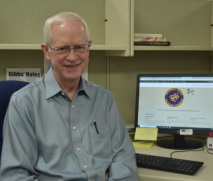
Byron was born in Sidney, OH in 1948. He graduated from the University of Cincinnati in 1971 with a BSEE degree.
Byron was hired as a Field Engineer in 1971, working out of the Dayton, OH field office. He won several sales awards and contests, and in 1976 became his district’s Digital Specialist (logic analyzers) and later MDP Specialist (Microprocessor Development Products).
In 1980, he accepted a job in marketing in the MDP business unit at the Walker Road facility. Byron left Tek in 1990. He also worked for Microtek International (previously Microcosm, an Intel spin-off), Flir Systems and Intel.
In 1996, Byron started his own successful online business, DataBack Systems LLC. In 2020, he became a TRVP volunteer, rebuilding and hosting our website and distributing our quarterly email newsletter. His interests include Christian apologetics, computers & email, 4 grandkids, and serving as senior sound tech at his church.